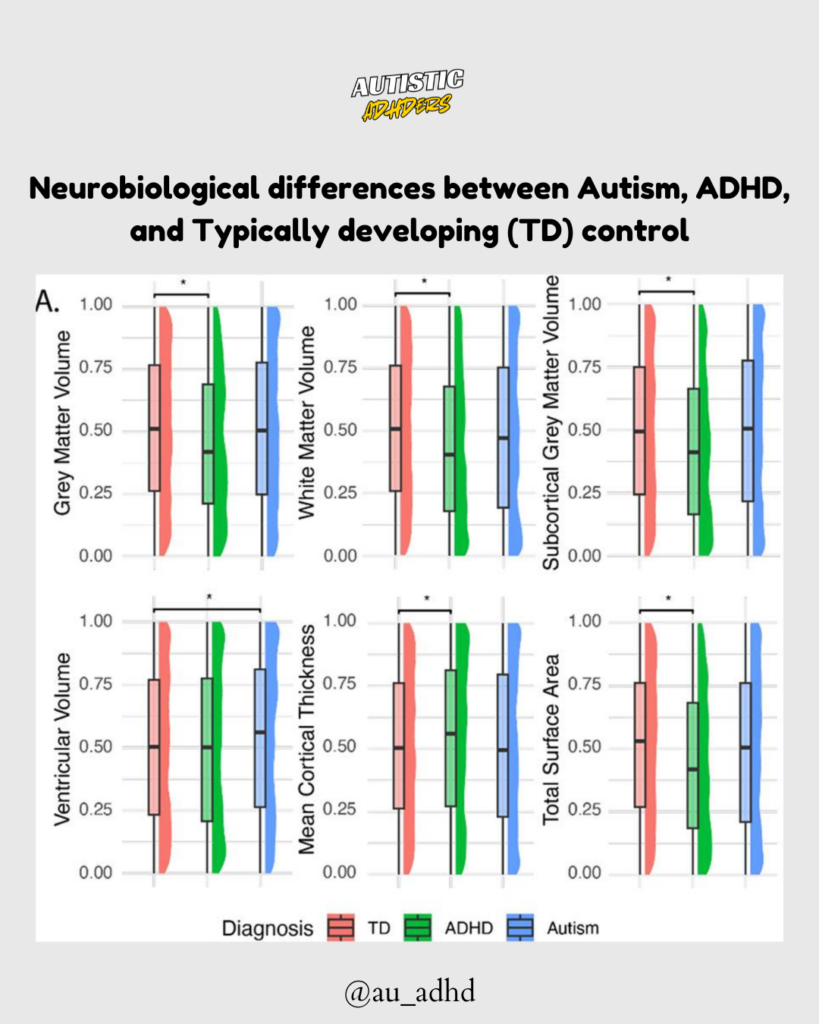A new scientific discovery is shedding light on things we always felt about Autism and ADHD at some level – the overlap between the two – as well how these two conditions are also distinct in their own way.
This latest research article aims to explain the brain differences between Autism Spectrum Disorder (ASD) and Attention Deficit Hyperactivity Disorder (ADHD)—and the results could change the way we understand these neurodivergent conditions forever.
For years, people with autism and ADHD have been lumped together, often misunderstood or misdiagnosed. But this latest research, published in Nature Mental Health, shows that while autism and ADHD share some similarities, they also have distinct brain structures that set them apart.
So what does this mean for the millions of autistic and ADHD individuals worldwide? Let’s break it down.
Autism and ADHD: More Than Just a Label
You may have noticed this personally in yourself or in a loved one – even if the diagnosis says – autism or ADHD, there are certain overlapping traits—difficulty focusing, sensory sensitivities, or struggles with social interactions. But despite some similarities, these conditions impact the brain in unique ways.
To uncover the truth, researchers analyzed thousands of brain scans from autistic individuals, ADHDers, and neurotypical participants. What they found was fascinating.

How Autism and ADHD Affect the Brain Differently
🧠 Autistic Brain Differences:
- Changes in social and sensory processing areas of the brain.
- Significant differences in the superior temporal sulcus, which helps us understand facial expressions and social cues.
- Alterations in the occipital lobe, the part of the brain responsible for visual processing—possibly explaining why some autistic individuals experience sensory overload.
⚡ ADHD Brain Differences:
- Distinct changes in areas linked to attention and impulse control.
- Differences in the prefrontal cortex, the part of the brain responsible for decision-making and focus.
- Alterations in the basal ganglia, which plays a role in motivation and movement—offering insight into hyperactivity and impulsivity in ADHDers.
These findings reveal that while both conditions are neurodevelopmental, they don’t affect the same areas of the brain in the same way.
So, What About People with Both Autism and ADHD?
Many people identify as both autistic and ADHD—often referred to as AuDHD—but until now, there wasn’t enough research to explain why this combination is so common.
According to this new study, individuals with both ASD and ADHD showed a mix of brain differences from both conditions:
- They had changes in social and sensory processing (like autism).
- They also had differences in attention and impulse control (like ADHD).
- This suggests that AuDHD is not just “double the traits” but a unique neurotype with its own brain structure.
In other words, AuDHD isn’t just ADHD + Autism—it’s its own experience with a distinct neurological fingerprint.
Why This Research Matters
This isn’t just another scientific study—it’s a game-changer for how we approach autism and ADHD in everyday life.
✅ More Accurate Diagnoses – Misdiagnosis is common, especially among women and non-binary individuals, who often mask their traits. These brain imaging findings could lead to better identification and support.
✅ Better Treatments – ADHD is often treated with stimulant medication, while autism therapies focus on sensory regulation and social skills. Understanding these neurological differences could lead to more tailored approaches for each condition.
✅ Less Stigma – For years, people with autism and ADHD have been labeled as “difficult,” “lazy,” or “unmotivated.” Brain research like this proves that these conditions aren’t behavioral issues—they’re neurological differences that deserve understanding and accommodation.
What’s next?
While this study is a big step forward, it’s just the beginning. Researchers still need to investigate how these brain differences develop over time and how they influence daily life.
For now, one thing is clear: autism and ADHD are not the same, but they do share common ground. Understanding these differences is key to improving support, reducing stigma, and creating a world where neurodivergent people can thrive.
💬 What do you think about these findings? Drop your thoughts in the comments!
Reference
Brain-charting autism and attention deficit hyperactivity disorder reveals distinct and overlapping neurobiology – Nature Mental Health

